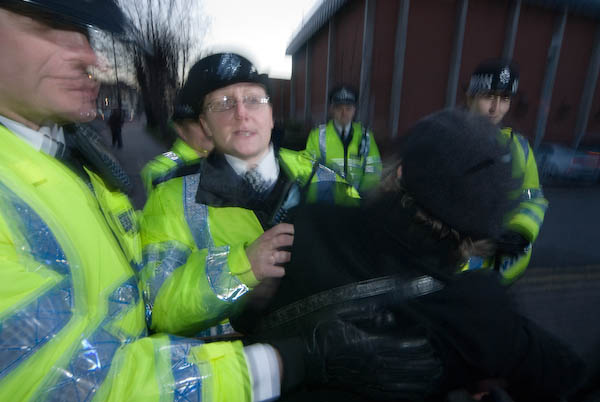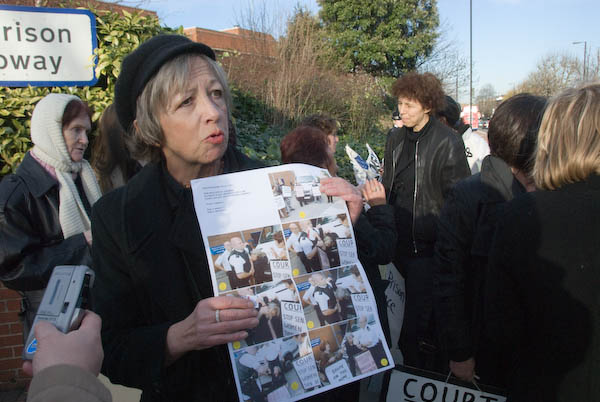Just when I thought I had flash sorted out, it jumps up and hits me, just refusing to do what it ought to be doing and what I wanted.

Not quite what I intended, but still usable…

I set 1/15s and it gave me 0.80s, and a rather more abstract effect than I wanted. Both images (C) 200, Peter Marshall
In the heat of the moment (I was covering a demo outside the jail against the death of women in Holloway Prison) it isn’t easy to think clearly. I still don’t know why the method I’ve been using with great success should suddenly stop working, but I do know what should have been the first solution to try.
In the old days, cameras were simple, mechanical devices. Worked by levers, springs, a bit of clockwork. If something went wrong it was usually pretty obvious – you couldn’t wind the film on, or nothing happened when you pressed the button. The big change came not with the switch to digital imaging, but with the introduction of electronics into the actual working of cameras. At first we mainly had it in exposure metering, and it was analogue rather than digital and pretty benign, even extremely useful. And it also gave us far more reliable and accurate shutter speeds.
In many ways the Olympus OM4 represented a near-perfect mix of manual and electronic camera, although if the battery went you were left with only a single emergency shutter speed of 1/60s. But for those of us who took black and white seriously, it had a built-in metering system that was perfect for the precise placement of shadow detail.
As someone who taught photography to beginners, the increasing electronic complexity of cameras after that soon became a nightmare. Where previously you could pick up any camera a student came with and show them exactly how to use it, you now – unless they owned the same model as you – had to get them to bring in the manual and pore through a hundred pages of Japlish for even the basics.
So if, like me you are out there and things get pear-shaped, the first thing to remember is that you are not dealing with a camera, but with a computer. If you are using a flash as well, things are even worse, because you have two computers and a network to trouble-shoot.
Fortunately I know a bit about computers (and networking) as well. The great majority of computer faults can be cured simply by re-booting. A few cameras actually do have a button you can press (often only with the tip of a pen) to do this, but more commonly it involves taking out the battery, counting for 10 seconds or longer and then replacing it. (The camera I have to do this most often with isn’t a digital camera, but a Konica Hexar F, a great camera for street photography despite only having a fixed 35mm lens.)
If you are using a flash, then it makes sense to give that the same treatment. Mine also has setting using the buttons which will reset it to factory defaults, which, given its incomprehensible menus and non-intuitive setting methods is probably no bad place to start.
Once you’ve rebooted the two computers, its also worth thinking about the network. There is an old rule about trouble-shooting networks, around 99% reliable, and is expressed simply: “Cables, cables, cables!” If like me you usually plug your flash directly into a hot shoe, then the appropriate paraphrase would be “contacts, contacts, contacts!” Clean them and then make sure you push the unit firmly all the way into the shoe.
More pictures from that demo are of course on My London Diary.